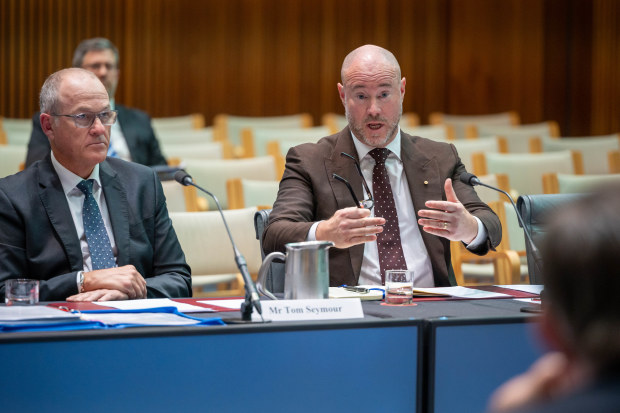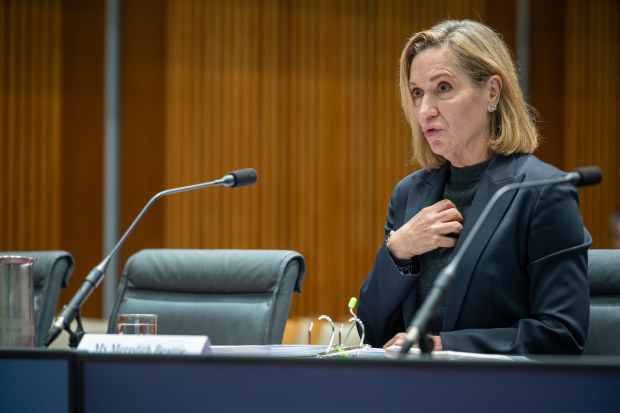“These companies have paid reasonably significant corporate taxes,” acknowledges Tony Wood, energy program director at the Grattan Institute. Resource projects create jobs, too, and many Australians also benefit from resource equities held by their super funds, such as shares in Rio or BHP. “This is not an academically precise science,” says Wood. “This is trying to get a balance between what’s fair for the resource companies, the developers and Australians.”
Some, however, believe that miners and petroleum companies should contribute more and that, as a nation, we have failed to take advantage of recent resource booms. Last month, Nobel Prize-winning economist Joseph Stiglitz said Australia was “
giving away its natural resources”, which he said was mind-boggling. He claimed: “If you made [companies] pay for the value of the resources and their fair share of taxes, you wouldn’t have the problems that you have today.”
The Australia Institute, a left-wing think tank based in Canberra, is among those routinely calling for heavier taxes on resources, such as a windfall tax on gas producers when prices spike overseas and their profits increase. “There is no economic reason that the mining industry, and the gas industry in particular, shouldn’t share some of their gains to help Australians struggling with energy price pain,” wrote its executive director, the economist Richard Denniss, in 2022.
For many Australians, the big puzzle is why we pay so much for once-inexpensive Australian natural gas in our homes. The simple explanation is that while our gas was once considered a low-profit commodity, compared to the quick and high-profit oil production in Bass Strait, these days we export most of it, which links it to the global market, hence the recent surge in prices. “We export all this gas, and we can’t afford it for ourselves,” says Tony Wood. “Struggling to deal with the consequences of the Ukraine war and volatile global energy markets may be defensible. Allowing the south-east of Australia to be facing gas shortfalls, a problem building for more than a decade, is an extraordinary failure of public policy by both sides of politics.”
The reward for selling our gas overseas was supposed to be a boost to state revenue on top of existing taxes. In 1988, Labor did manage to introduce a new tax on offshore oil developments, called the Petroleum Resource Rent Tax, or PRRT, in the face of a ferocious campaign driven by the petroleum companies.
But it was a pyrrhic victory: generous concessions allowed explorers to carry losses forward for many years and offset their income from sales; hence, it remains a relatively small proportion of the total tax take. In 2022–23, gas and oil producers paid $8.8 billion in company taxes, $4.9 billion in excises and $1.85 billion in PRRT,
according to the industry’s peak body. “It’s been an absolute failure, and the government keeps tinkering around the edges,” says Diane Kraal, an expert on taxation law at Monash University. “We’ve got community-owned resources, and we should get a reasonable share from the extraction of those resources, and it is not happening.” Kraal says we’d be better off replacing it with a system of royalties.
“The PRRT is infamous for being a tax that hardly anyone’s ever paid,” says Tony Wood. “Basically, what happens is it’s based upon profit. So if you don’t make any profit, you don’t have to pay. That sounds OK, but you’re allowed to carry forward all of your upfront costs and losses.” A government audit found that as of October 2008, only 10 out of 24 projects were making a profit and therefore paying the PRRT. Says Kevin Morrison, an energy analyst with the Institute for Energy Economics and Financial Analysis: “Somehow, none of these operations are ever making money because there’s so much that they can write off.”
Following a major review of the tax in 2017 chaired by the independent expert Mike Callaghan, amendments were made to reduce permissible deductions and amend anti-avoidance rules. Still, some projects may never pay PRRT, the Australian Tax Office conceded in 2021.
The ATO also has its work cut out chasing down resources revenue that’s shifted overseas using clever accounting methods. For example, using what’s dubbed “thin capitalisation”, a local branch of a multinational “borrows” money at a high rate from another branch of the same firm overseas, and the payments help to reduce its tax burden. Then there’s “transfer pricing”, where you extract a product in a country with a high rate of tax but spirit it to a different country with a lower rate of tax, such as Singapore, and pay your tax bill there instead.
Could we get miners to pay more?
It’s been tried. In 2010, Kevin Rudd’s Labor government tried to introduce an extra tax on miners like the PRRT. Called the Resource Super Profit Tax, it emerged from Ken Henry’s tax review of 2008–9 and would have levied an additional 40 per cent tax on profits deemed to be those above an acceptable rate of return (while also reducing the rate of company tax, but that was left a little vague).
Like the petroleum producers before them, the miners revolted. BHP brought together a crack team of between 25 and 30 executives, marketing experts and pollsters in a “war room” at its global headquarters in Melbourne’s Lonsdale Street, reporting directly to chief executive Marius Kloppers. They set to work figuring out what kind of anti-tax campaign would best resonate with the Australian public, according to those with inside knowledge of the campaign.
Mining giant Rio Tinto, the Swiss multinational Xstrata, and the lobbyist group the Minerals Council had also hurriedly gathered talent together in similar whiteboard-equipped offices across the country. That included corporate strategist John Connolly, market-research specialist Tony Mitchelmore and the advertising guru Neil Lawrence, who had, ironically, helped get Rudd elected back in 2007, coming up with the catchy campaign slogan “Kevin 07”.
The group launched a blitz of television spots and full-page newspaper advertisements that focused on what mining did for “average” Australians: “Rudd’s mining tax hurts us all” was one well-used slogan, alongside “Weaken mining, and you weaken Australia”.
The government attempted to counter the attack in what became known as the “ad wars”. But its campaign was judged as preachy compared to the miners’ grassroots approach, which polling showed was cutting through. Support for Rudd’s leadership wavered, and in June 2010, when Julia Gillard defeated him in a leadership challenge, she immediately worked to make peace with the miners.
Not only had the miners killed off Rudd’s original proposed tax, but the compromise measure they agreed to with Gillard – now called the Mineral Resources Rent Tax – was substantially watered down. The total cost of the campaign, according to insiders, was between $22 and $26 million, barely a quarter of what they say they had been prepared to spend, and billions less than Rudd’s tax could have cost them. “I guess [Gillard] was desperate,” says Morrison. “She just thought, well, I just have to get this monkey off my back and fix it.” In any event, Gillard’s replacement tax was repealed by the Abbott Coalition government in 2014.
Today, the Greens want to revive the original Rudd proposal, with some amendments, and to strengthen the PRRT. “Resource corporations have got their hooks into the establishment parties,” says Greens treasury spokesperson Nick McKim. “Both the Labor and Liberal parties are running scared of facing another campaign by the resources sector, similar to what Kevin Rudd faced when he tried to introduce higher tax rates for resource companies.”
At this point in the conversation,
Norway’s sovereign wealth fund usually comes up. Thanks to offshore oil and gas exploration, Norway’s Government Pension Fund Global is now worth in the region of $2.5 trillion – nearly $500,000 for every Norwegian citizen – and contributes over 20 per cent of that country’s annual budget while continuing to grow ever larger. “One thing you could do with the resource rent tax is put it into a sovereign wealth fund,” says Tony Wood. “When you think about the biggest sovereign wealth fund in the world, the Norwegian one, guess where the money came from?”
Tax is not the whole story, however. Norway does tax petroleum operators more highly than we do resource companies here. But Norway’s government has also invested directly in petroleum exploration, and its prudent management of the Global Pension Fund – spending less in good times and a little more in bad – has helped the savings compound into the enormous sum under management today.
In Australia, we actually do have a sovereign wealth fund, the Future Fund, but it’s not funded by resources; rather a one-time deposit from government surpluses and the sale of Telstra. That’s not to say a resource-based fund hasn’t been proposed: in 2012, for example, economist
David Gruen noted the idea had “attracted a number of supporters as the boom has proceeded”, and that proponents wanted to “ensure a larger share of unusually high incomes is saved for longer-term benefit rather than being used for current consumption”. But first, argues Diane Kraal, to follow in the footsteps of Norway, Qatar and the other resource-rich nations who have built nest eggs, “We have to actually get our hands on our fair share of that wealth.”


